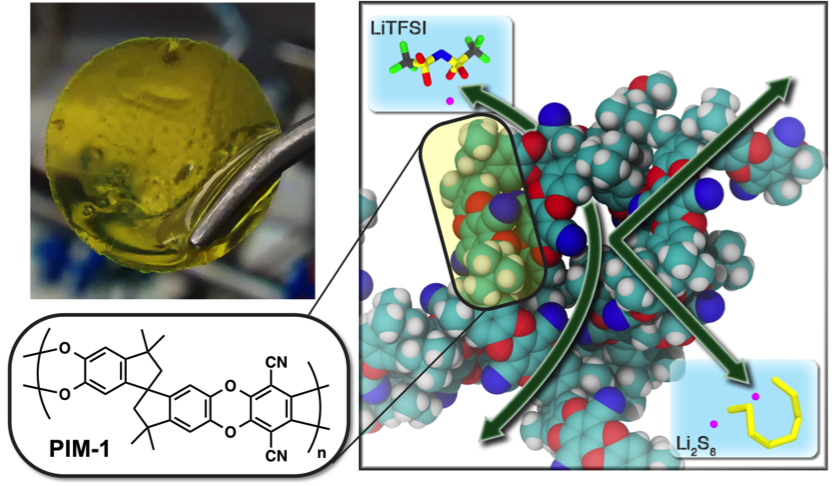
Scientific Achievement
Polymers of Intrinsic Microporosity are harnessed as an ion-selective membrane, effectively blocking polysulfide crossover due to its microporous molecular-sieving network.
Significance and Impact
The prototypical polymer, PIM-1, is shown to reduce unwanted species crossover in polysulfide flow battery.
Research
- 500-fold polysulfide crossover reduction using an H-cell setup
- Long-term volumetric energy density at ~100 Wh/L after 50 cycles at C/8 with LiNO3, the anode-protecting additive
- Capable of maintaining ~45 Wh/L volumetric energy density after 50 cycles at C/8 in the absence of LiNO3
Work performed at the Molecular Foundry, Lawrence Berkeley National Lab (JCESR partner) by C. Li, A. L. Ward, S. E. Doris, T. A. Pascal, D. Prendergast and B. A. Helms, Nano Lett., 2015, 15 (9), 5724-5729.

